Look into the future of mobile technologies: MWC 2023 trends
Thousands of attendees from over 200 countries gathered in Fira de Barcelona Convention Center halls to discover the latest mobile industry innovations, experience gadgets that are not yet on sale, and unveil where the world of communications is heading. Breezy GM Andrii Kosar shared the most exciting trends he noted during his visit to…
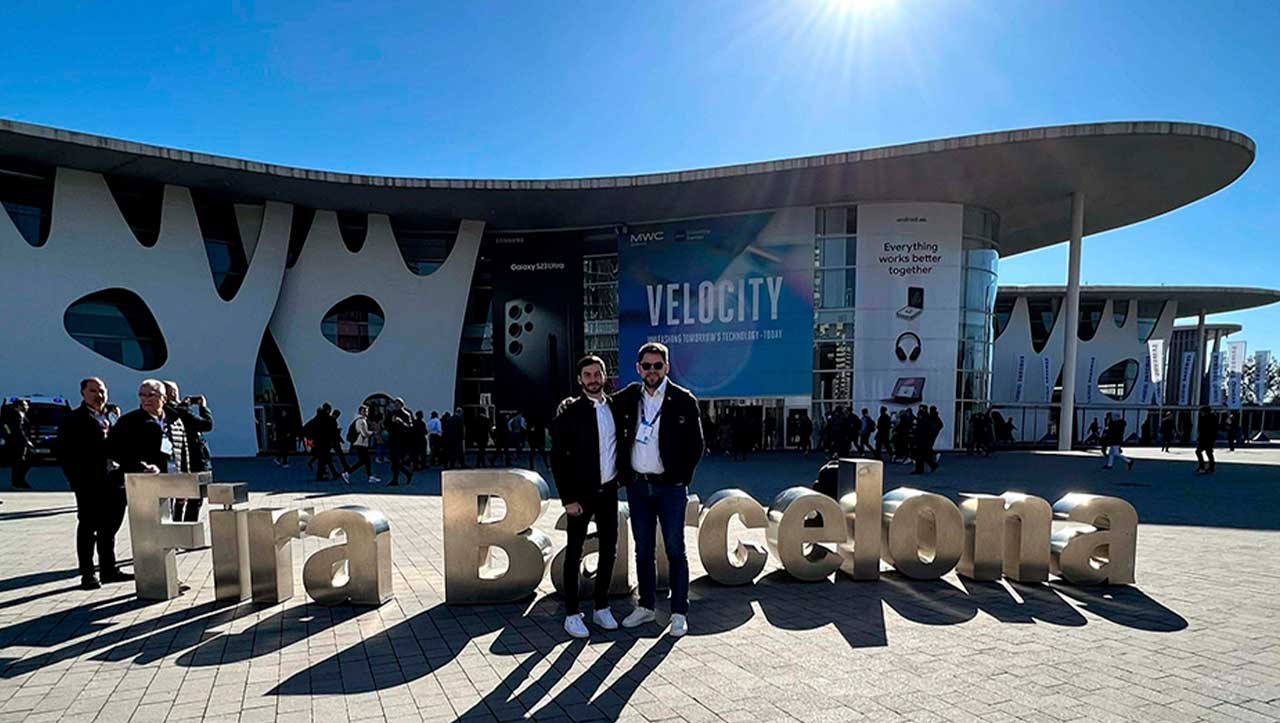
Thousands of attendees from over 200 countries gathered in Fira de Barcelona Convention Center halls to discover the latest mobile industry innovations, experience gadgets that are not yet on sale, and unveil where the world of communications is heading.
Breezy GM Andrii Kosar shared the most exciting trends he noted during his visit to Mobile World Congress. Sustainability, flexible screens, and robots are just a few of Barcelona's highlights this year.
Trend 1: Sustainability in technologies development
Virtually every brand at congress has announced environmental protection and sustainability. MWC 2023 resembled the New Year in many ways, with brands making resolutions to become even more eco-friendly, carbon-neutral, and powered by renewable energy.
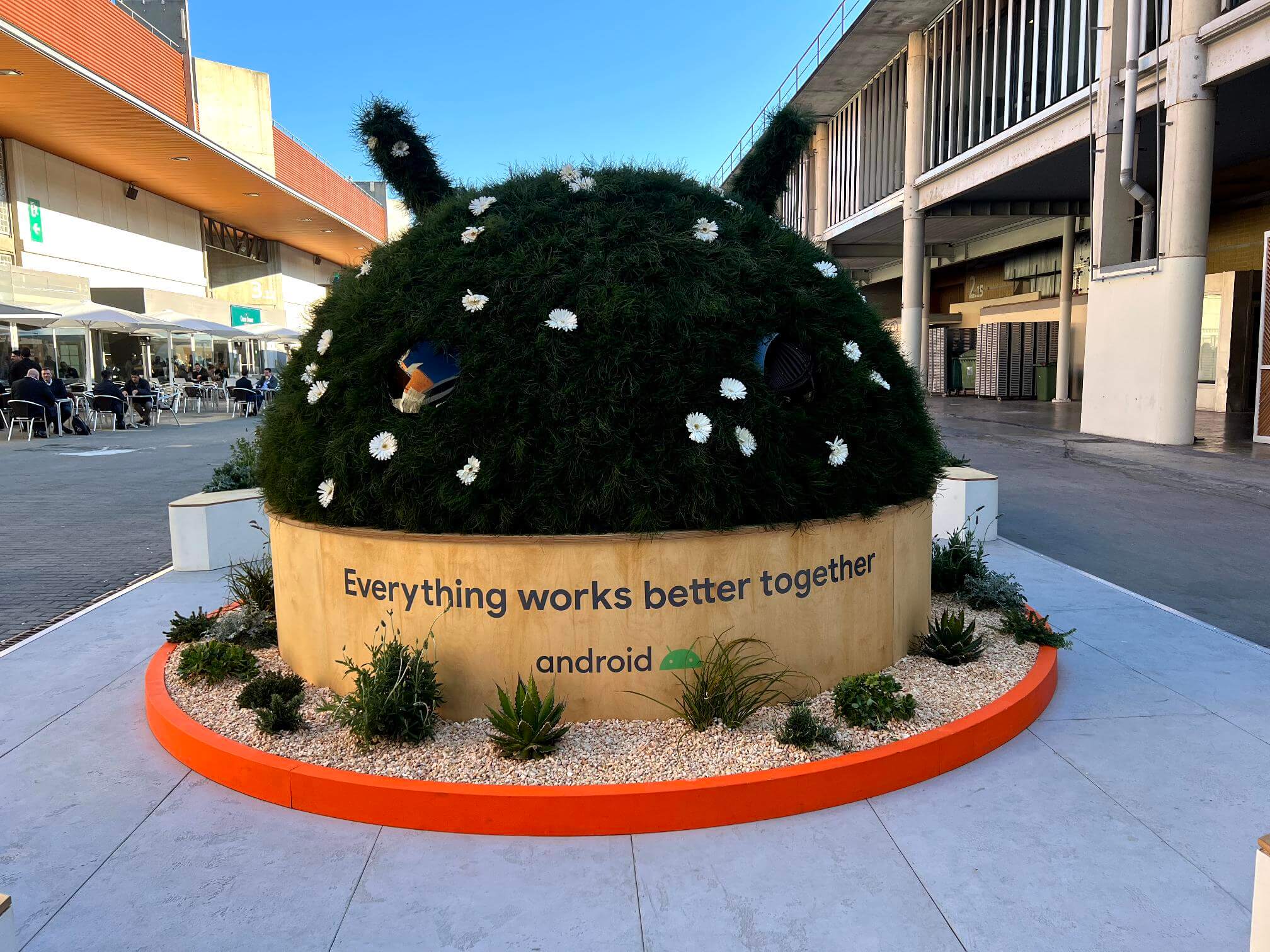
Android demonstrated its journey to zero emissions in 2030 as a walk through a sustainable garden starting near its logo flower bed. If everything goes according to plan, then very soon, watching videos, sending mail, searching the web, and other Google services will work only on green energy.
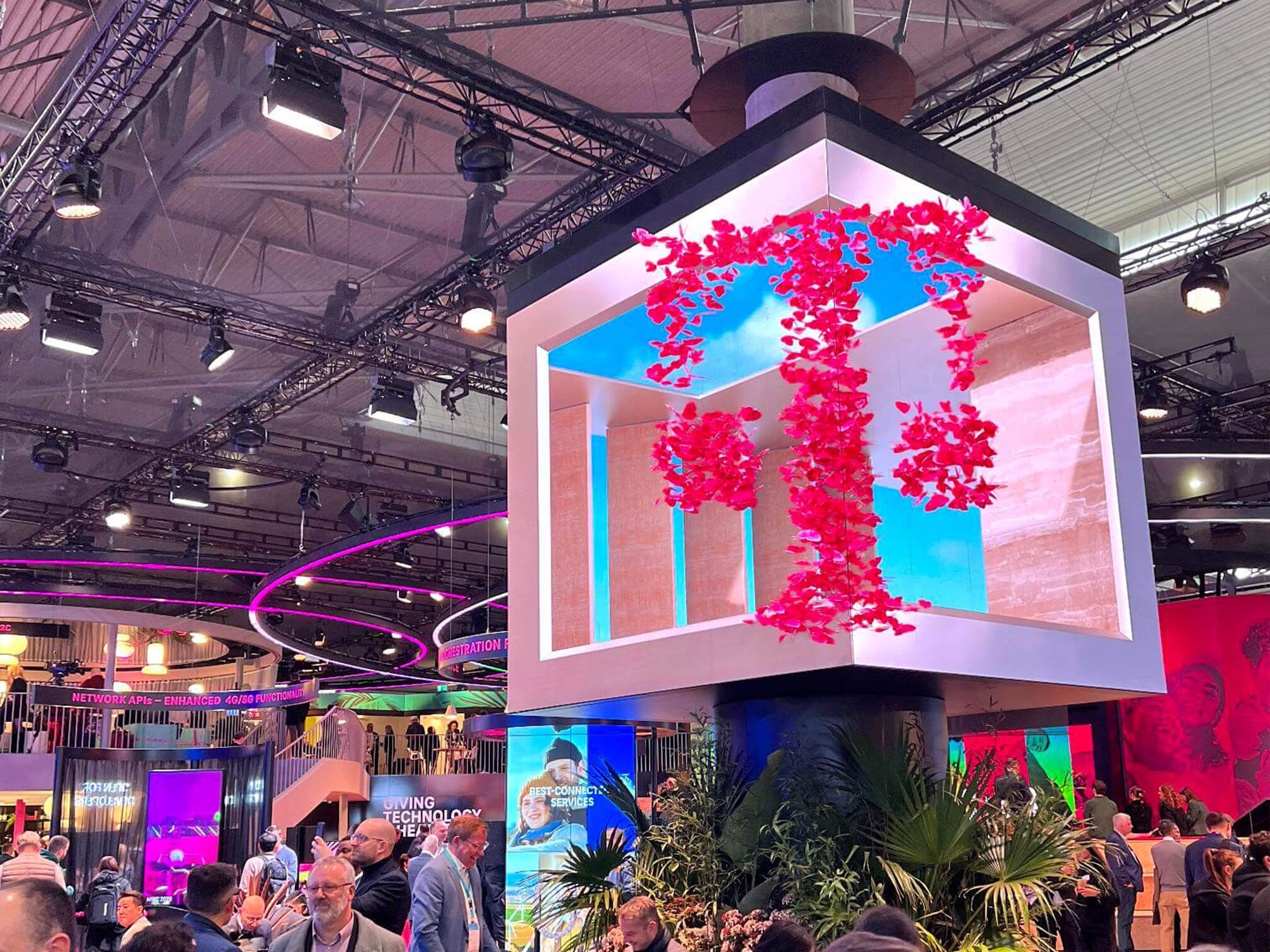
The Deutsche Telekom booth was saturated with the environmental care idea – starting with the logo of fluttering butterflies and ending with the presentation of the #GreenMagenta program, which unites the mobile operator's "green" initiatives.
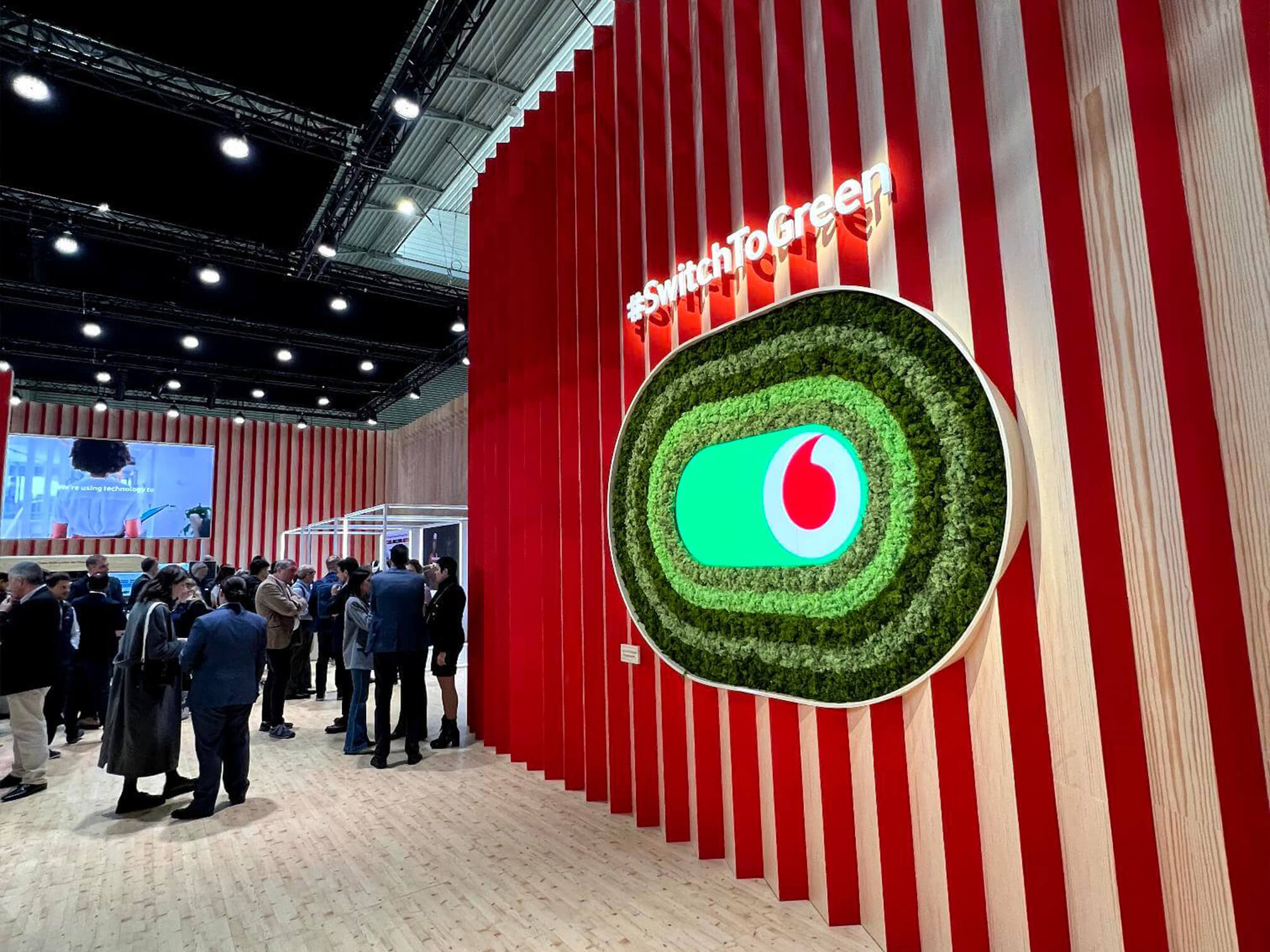
Our partner in Ukraine, Vodafone, at its #SwitchToGreen booth, offered visitors the switching on a “green” way of life by just changing their habits: remember to switch on wi-fi and switch off a phone as soon as it gets charged.
You can identify three directions toward sustainability:
1. Reuse of materials
Samsung introduced the circular economy as a kind of railway or production line, along which “cars” of multicolored trains have been moving: green brought information about recycled materials, and white – about prolonging devices' lifecycles.
The components of the S23 series include recycled materials:
– discarded fishing nets collected in the Indian Ocean. The material extracted this way is part of the S Pen inner cover, bottom speaker module, and antenna. By the end of 2023, the company expects to prevent over 15 tons of fishing nets from entering the ocean, where fish, birds, and marine animals are entangled, causing their injury and death.
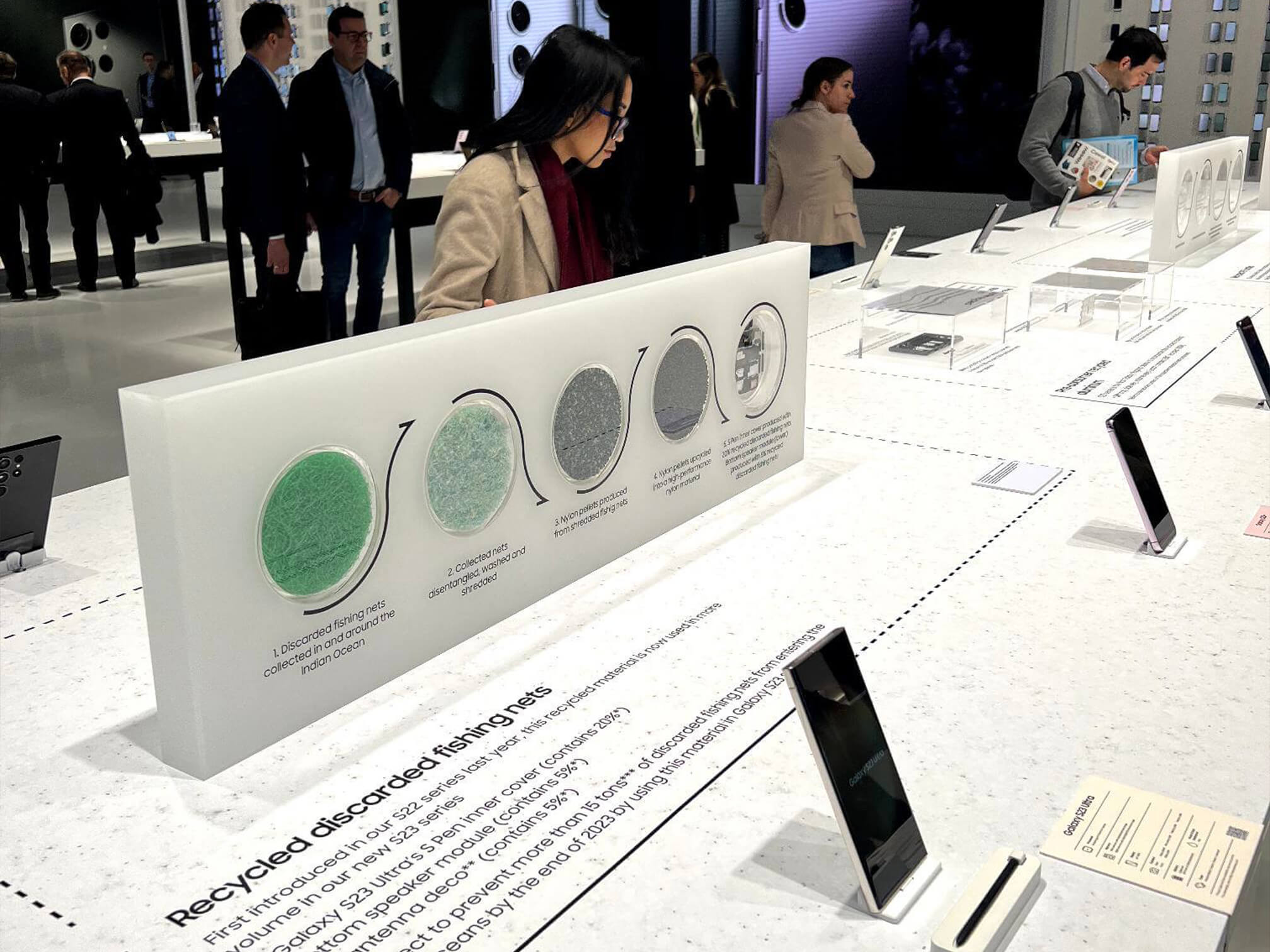
– glass and aluminum: Front and back glass made with Corning Gorilla Glass Victus 2 technology not only survive a drop up to 1 meter, is extremely sharp-contact resistant, and consists of 22% recycled glass. In addition, some parts include recycled aluminum.

For those who prefer extra protection, PanzerGlass has developed a screen protector for the S23 series smartphones made of recycled plastic bottles.
The new series is packaged in a 100% recycled paper box. At the same time, the packaging has reinforced protection of the front and back surfaces. And no plastic stickers!
2. Proloning of gadgets lifecycle. Vendors design smartphones to make them last as long as possible, then become a source of materials for new gadgets.
So Samsung S23 is designed for 4 software update cycles and 5 years of security updates. It has an extended warranty and can be repaired. Moisture and dust protection allows devices to last longer.
In partnership with Samsung, we help prolong the lifecycle of devices as part of our Trade-In program (exchanging an old gadget for a new one with extra). We refurbish used gadgets obtained this way and then find them new owners.
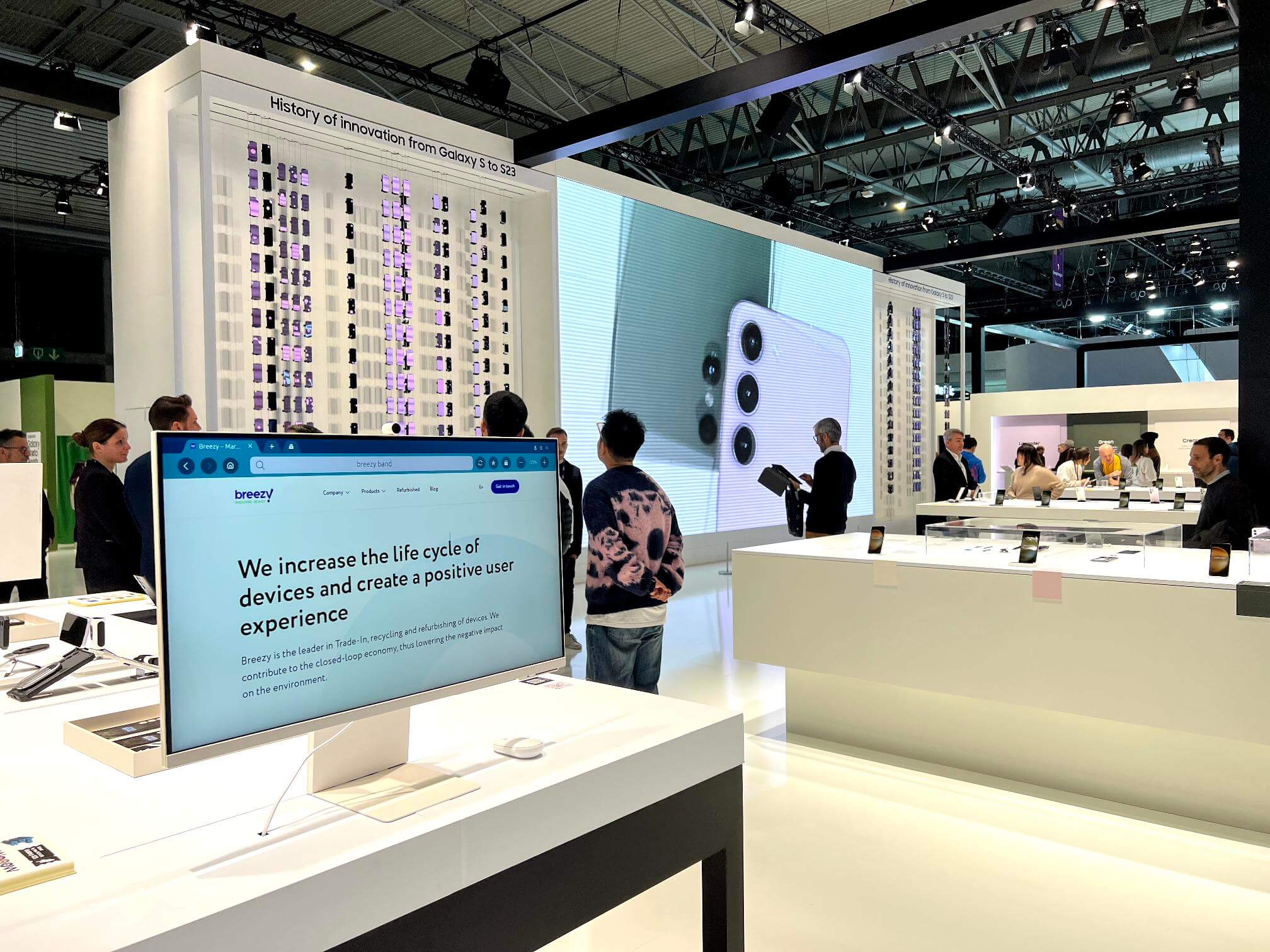
3. Self-repair. The capability to repair, including self-repair, is crucial in prolonging gadgets' lifecycle.
HMD unveiled the new Nokia G22 phone at MWC, specially designed in collaboration with iFixit to make DIY repairs as easy as possible for users. The company claims its battery can be replaced in about five minutes and the screen in 20. Yes, these are still far from the removable batteries of keypad phones, which were taken out in a second with the opening of the lid. So this replacement needs some work. But, on the other hand, this is not a battery combined with the case, which is almost impossible to replace. So this is a move in the right direction.
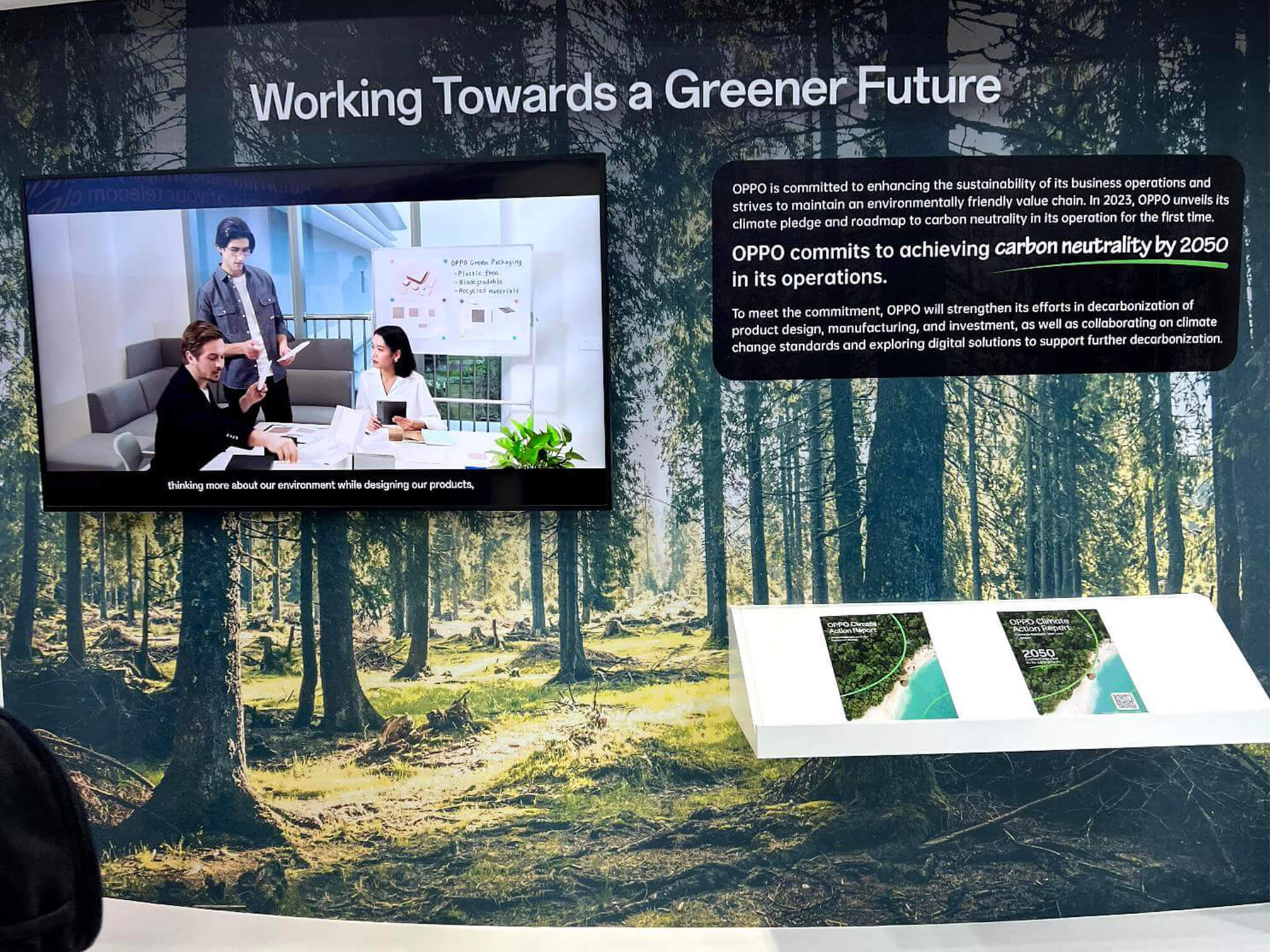
No Greenwashing. Writing "We are 100% eco-friendly" is not enough anymore. Instead, there are many numbers in sustainability reports. Everything is digitized and measured; dynamics are monitored. Considering that you can only manage what you measure, the situation with measuring the environmental footprint seems more and more manageable. We work at Breezy by this principle.
Trend 2: Robotisation
Robots were presented everywhere at the exhibition and by multiple brands. There were robotic "working hands" for production lines. And barristers and bartenders that we know so well: from vmware and Orange 5G Lab with Gany.

We met a robot bartender at the exhibition whose relative seemed to work in our office at the ASBIS Hi-tech Cluster HUB. And a little later (surprise, surprise) – a robot bartender. If robots take over the world, human bartenders must find other jobs.
Of course, the most exciting were the robots presented by Xiaomi: the humanoid CyberOne and his four-legged friend CyberDog. As CyberDog was alone demonstrating his abilities at the exhibition, CyberOne seemed to be just a costly mannequin.

The four-legged robot with bionic locomotion and interactive visual and auditory capabilities can follow commands, recognize its owners, and even automatically track their movements. The Animal Robot, powered by the NVIDIA Jetson Xavier NX platform, accepts commands in three ways: via mobile phone, voice control, or remote control. However, he is still far from a real four-legged friend, the visitors like CyberDog. It is still being determined how and in what situations these robots can be used, but it is interesting to watch their development.

Trend 3: Flexible display
Yes, this is no longer surprising since South Korean companies have been developing the technology for 5 years, but there is a firm belief that we are about to catch the moment of its reduction in price and access to mass use by consumers. Everyone is already familiar with Samsung's flip phones. Other brands presented their folding models with flexible screens.
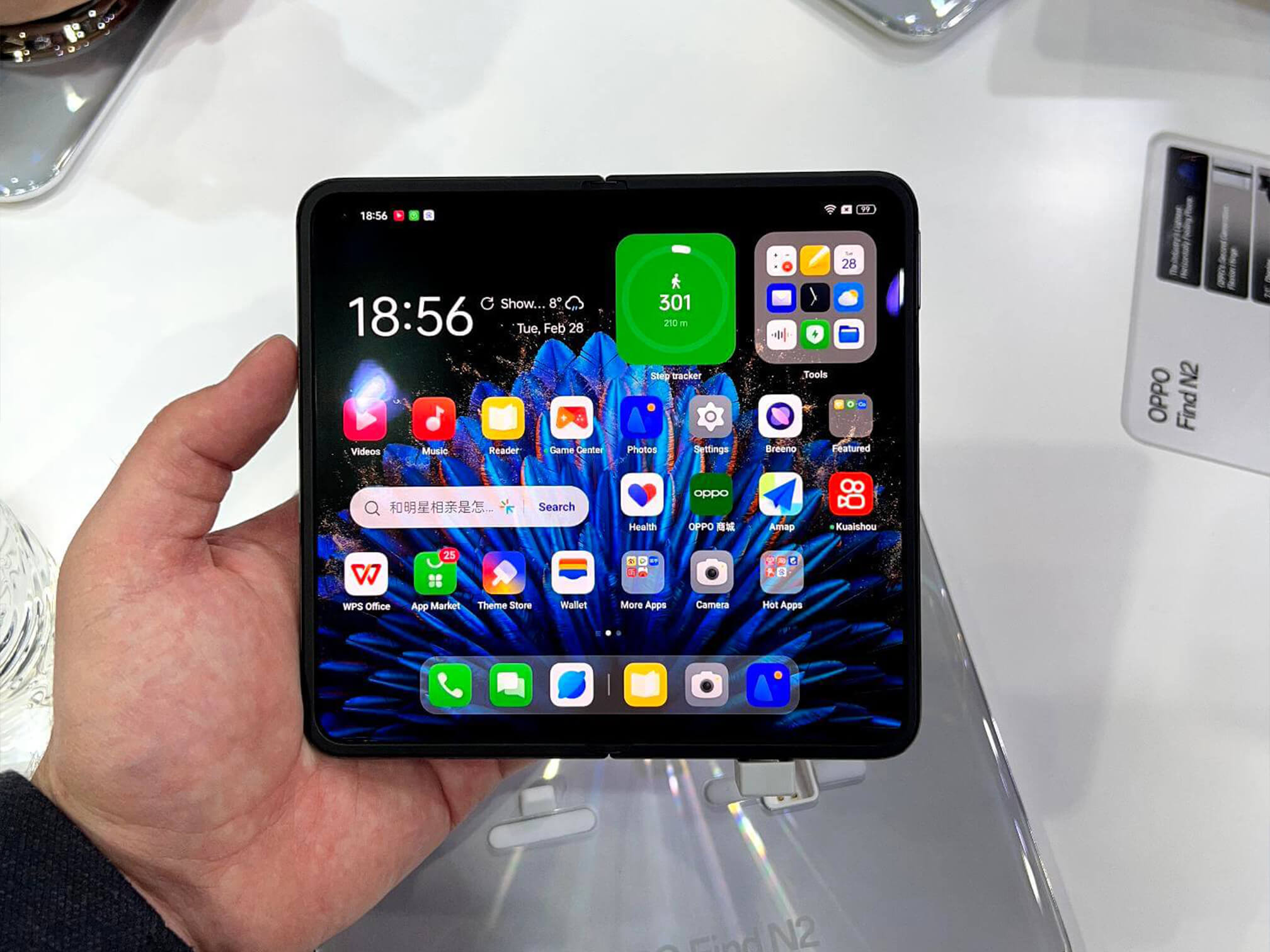
OPPO introduced Find series smartphones: N2 Flip and N2. Both models have a flip design. Displays, when unfolded, are 6.8 and 7.1 inches. They are pretty light – the manufacturer claims this is the most lightweight horizontal folding model.
In both models, the displays will survive 400,000 fold cycles twice as many as Samsung). This corresponds to 10 years of continuous usage if it is folded and unfolded 100 times daily.
Honor Magic VS is a small tablet that can be folded in half – to the size of a regular phone. Its internal screen measures 7.9 inches with an almost square ratio of 10.3:9, while the external screen measures 6.45 inches.

TECNO presented its PHANTOM V FOLD – one the current biggest folding phones with 7,85 inches screen.
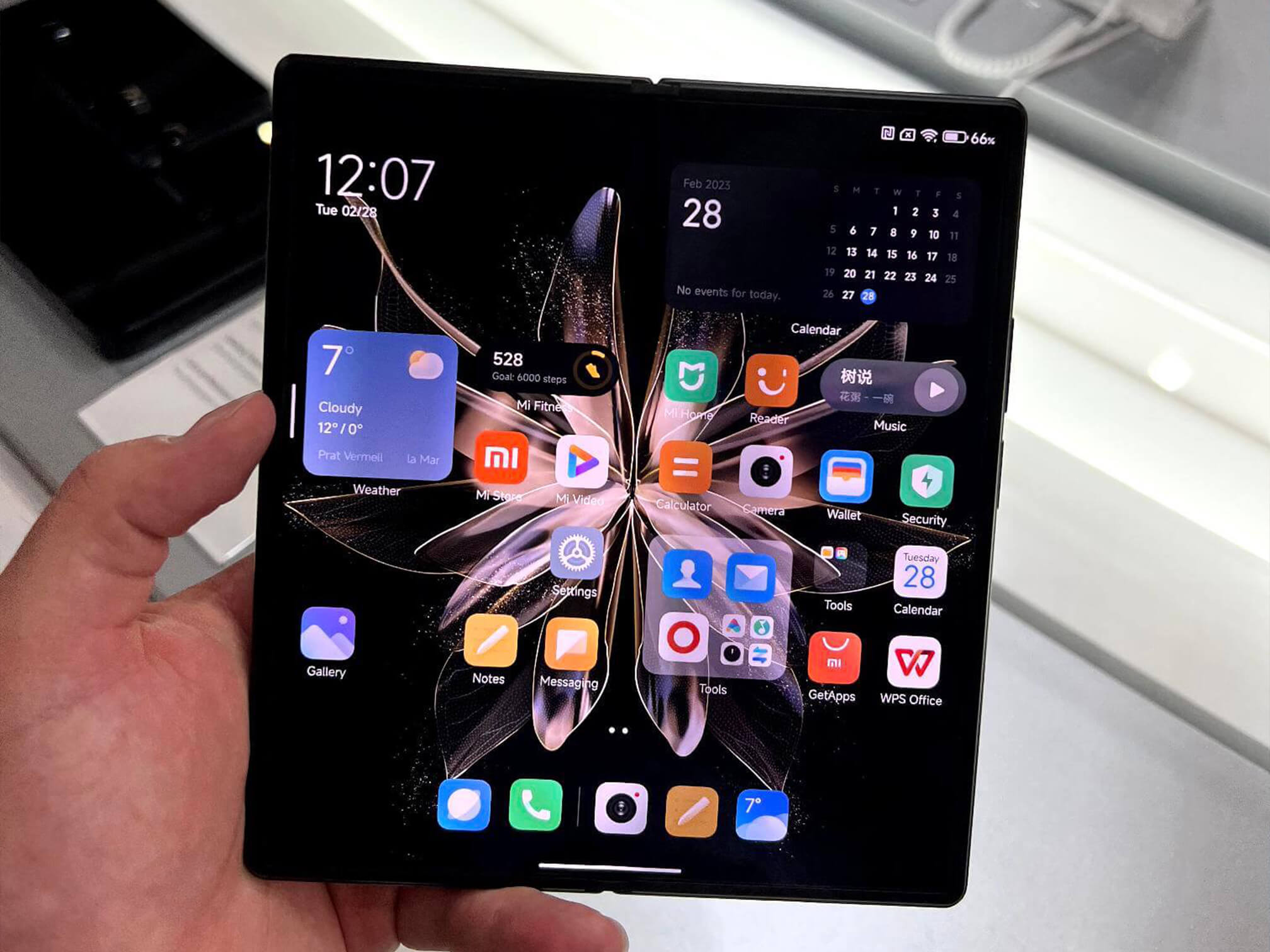
My favorite is Xiaomi MIX Fold 2. This is not a novelty on the market. But it's lighter, thinner, and more elegant than comparable models from other brands, fits comfortably in hand, and has excellent color rendering.
Motorola followed the other way. Their Moto RIZR folds out from a pocket form factor into a regular-sized smartphone.
Lenovo introduced a laptop with a retractable monitor. When folded, it's a normal ThinkPad. But its monitor can be pulled up twice to get more field for work.
While folding and retractable models are nothing new, they are becoming lighter, thinner, and with more folding cycles. And competition within the segment will inevitably make technology cheaper and more affordable.
Trend 4: An ecosystem with smartphones in the core
Xiaomi has introduced many smart spaces pavilions. Smart living room, kitchen, study, and outdoor spaces with a single entry point into the ecosystem – a smartphone of the 13th series.
Instead of summary
The primary trend is environmental friendliness, which has become inevitable for every vendor. It has been strengthening over the past five years, and no hesitations that it will continue to grow. This is the new normal that businesses need to accept. The time for reflection on the ecology has already gone, now is the time for action – as leading brands demonstrate. This includes cooperation with businesses like Breezy with the Trade-In and Refurbished programs. The planet's resources are finite, so circular economy solutions, emission reductions, and the transition to green energy are more important today than ever.



 International
International  Ukraine
Ukraine  Poland
Poland  Georgia
Georgia  Kazakhstan
Kazakhstan  Cyprus
Cyprus  Azerbaijan
Azerbaijan  Moldova
Moldova